Lukas Linsbauer
Semantic Clone Detection via Probabilistic Software Modeling
Aug 11, 2020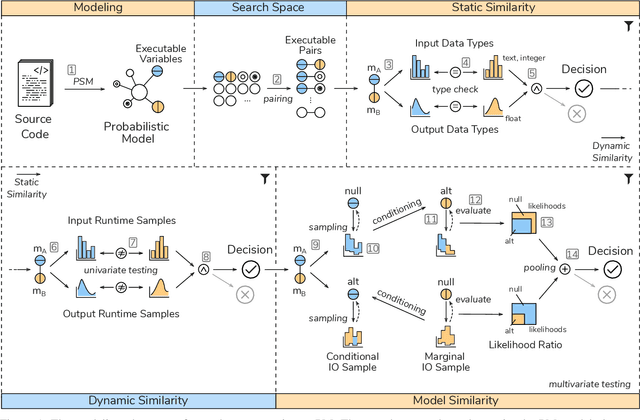

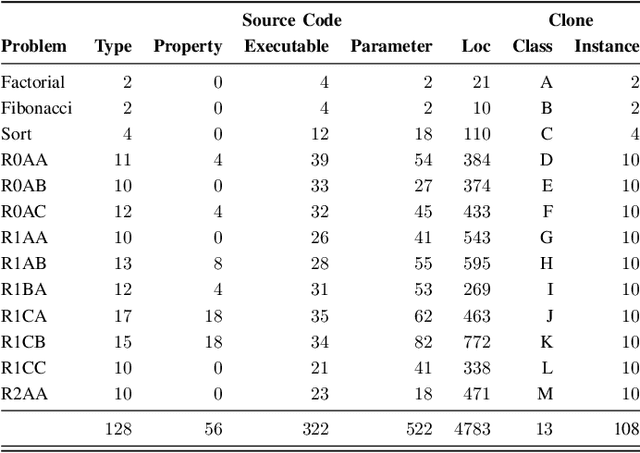

Abstract:Semantic clone detection is the process of finding program elements with similar or equal runtime behavior. For example, detecting the semantic equality between the recursive and iterative implementation of the factorial computation. Semantic clone detection is the de facto technical boundary of clone detectors. This boundary was tested over the last years with interesting new approaches. This work contributes a semantic clone detection approach that detects clones with 0% syntactic similarity. We present Semantic Clone Detection via Probabilistic Software Modeling (SCD-PSM) as a stable and precise solution to semantic clone detection. PSM builds a probabilistic model of a program that is capable of evaluating and generating runtime data. SCD-PSM leverages this model and its model elements to finding behaviorally equal model elements. This behavioral equality is then generalized to semantic equality of the original program elements. It uses the likelihood between model elements as a distance metric. Then, it employs the likelihood ratio significance test to decide whether this distance is significant, given a pre-specified and controllable false-positive rate. The output of SCD-PSM are pairs of program elements (i.e., methods), their distance, and a decision whether they are clones or not. SCD-PSM yields excellent results with a Matthews Correlation Coefficient greater 0.9. These results are obtained on classical semantic clone detection problems such as detecting recursive and iterative versions of an algorithm, but also on complex problems used in coding competitions.
Probabilistic Software Modeling: A Data-driven Paradigm for Software Analysis
Dec 18, 2019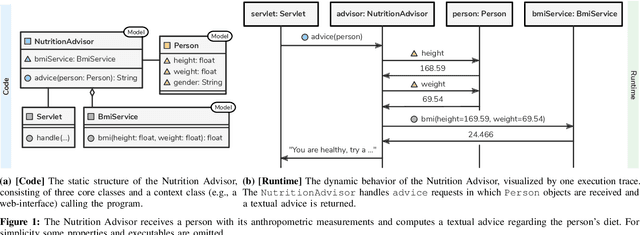
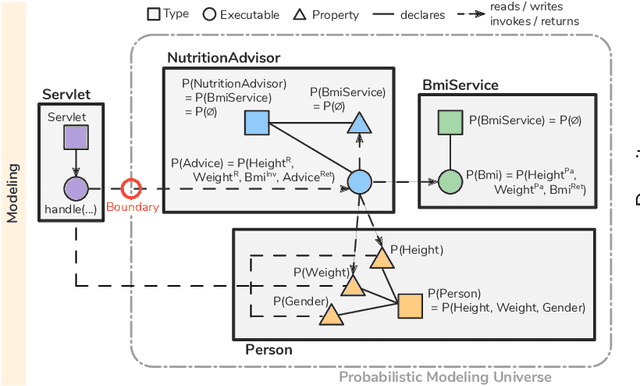
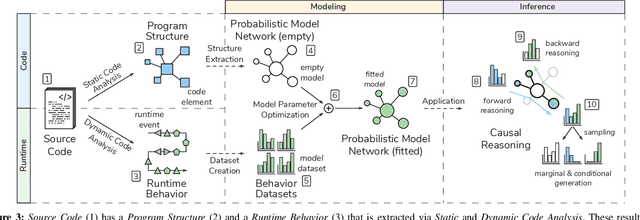
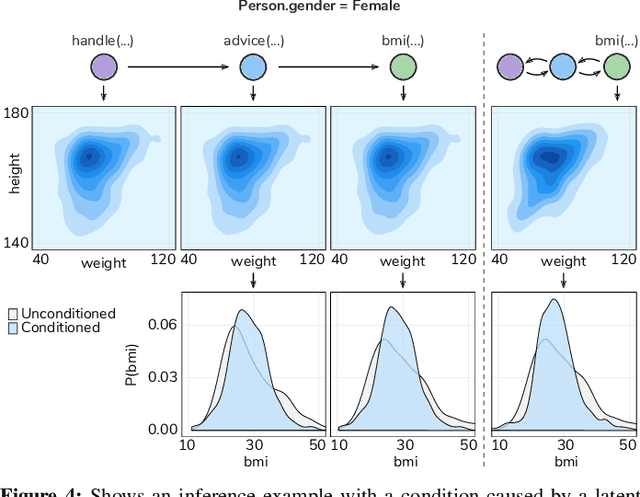
Abstract:Software systems are complex, and behavioral comprehension with the increasing amount of AI components challenges traditional testing and maintenance strategies.The lack of tools and methodologies for behavioral software comprehension leaves developers to testing and debugging that work in the boundaries of known scenarios. We present Probabilistic Software Modeling (PSM), a data-driven modeling paradigm for predictive and generative methods in software engineering. PSM analyzes a program and synthesizes a network of probabilistic models that can simulate and quantify the original program's behavior. The approach extracts the type, executable, and property structure of a program and copies its topology. Each model is then optimized towards the observed runtime leading to a network that reflects the system's structure and behavior. The resulting network allows for the full spectrum of statistical inferential analysis with which rich predictive and generative applications can be built. Applications range from the visualization of states, inferential queries, test case generation, and anomaly detection up to the stochastic execution of the modeled system. In this work, we present the modeling methodologies, an empirical study of the runtime behavior of software systems, and a comprehensive study on PSM modeled systems. Results indicate that PSM is a solid foundation for structural and behavioral software comprehension applications.
A Hitchhiker's Guide to Search-Based Software Engineering for Software Product Lines
Jun 11, 2014

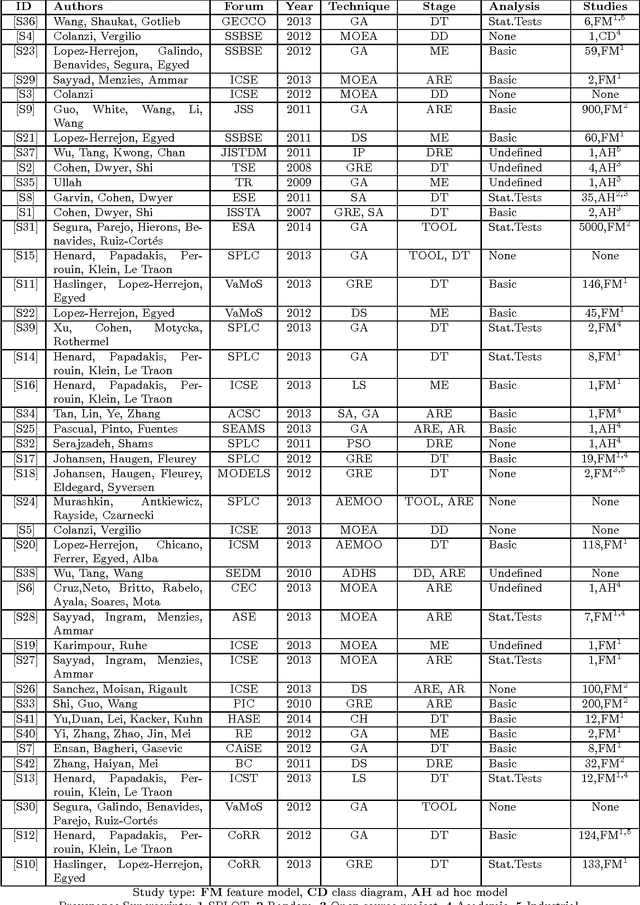
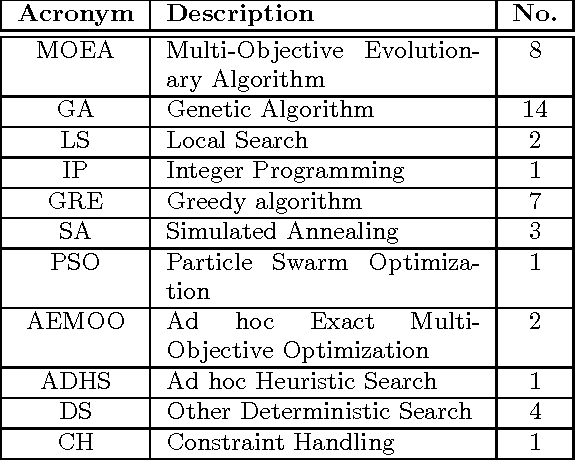
Abstract:Search Based Software Engineering (SBSE) is an emerging discipline that focuses on the application of search-based optimization techniques to software engineering problems. The capacity of SBSE techniques to tackle problems involving large search spaces make their application attractive for Software Product Lines (SPLs). In recent years, several publications have appeared that apply SBSE techniques to SPL problems. In this paper, we present the results of a systematic mapping study of such publications. We identified the stages of the SPL life cycle where SBSE techniques have been used, what case studies have been employed and how they have been analysed. This mapping study revealed potential venues for further research as well as common misunderstanding and pitfalls when applying SBSE techniques that we address by providing a guideline for researchers and practitioners interested in exploiting these techniques.
 Add to Chrome
Add to Chrome Add to Firefox
Add to Firefox Add to Edge
Add to Edge